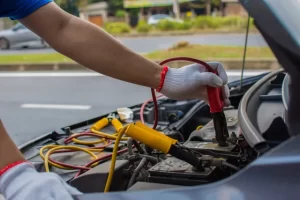
Due to the ageing population and growing amount of elderly drivers, Australia is implementing a major overhaul of the seniors driving licence system in 2025. They are designed to strike a balance between safety and preserving seniors’ vital access to transport, allowing older Australians to stay independent while promoting road safety.
Background
With an increasingly aged population in Australia, the increase in senior drivers on the road is raising more questions about safety. Seniors may have a lifetime of driving experience but age-related factors such as poorer vision, slower reaction times, and changes in cognitive skills mandate targeted policies. The changes are intended to raise the level of safety without discriminating against the freedom of senior drivers.
Key Changes
Enhanced Medical Assessments
Medical exams for elderly drivers are mostly based on their age at present. Beginning in 2025, they will become more health-based and less age-dependent. “Comprehensive health testing” will become mandatory for seniors every two years once they reach 70, and annually for those beyond 80 with tests appropriate to their health risk assessments.
Key Features:
- Vision exams, cognitive testing and mobility screenings.
- A uniform medical evaluation form acrossthe state.
- Expansion of telehealth services to enhance access for remote clients.
Graduated Licensing System for Seniors
MODELS such as the Graduated Licensing Scheme (GLS) will be applied to seniors, taking a leaf from those designed for younger drivers. This system will offer individual services geared to the user’s driving ability and needs.
Levels of Licensing:
- Full Licence: Issued to qualified senior citizens after passing a strict test They have unrestricted ability to drive.
- Conditional Licence: For individuals who have some limitations but can drive safely with certain conditions, for example no driving at night or confinement to locality.
- Restricted Licence: For those with marked impairment where they may only drive under closely regulated conditions.
Educational and Support Programs
Seniors who still drive should be kept safe on the road through a variety of educational programs. The programs are to focus on techniques for safe driving, changes in road laws and learning how to use the latest vehicle technologies.
Programs Include:
- Workshops on defensive driving techniques.
- Frequent updates with the latest road law modifications.
- Instruction on the use of adaptive vehicle technologies, like lane-keeping assistance and automated emergency braking systems.
Integration of Technology
The new system will rely heavily on technology. This also encompasses remote telehealth evaluations and promotion of the use of advanced vehicle safety systems in older drivers.
Technologies Encouraged:
- Adaptive cruise control.
- Collision avoidance systems.
- Voice-activated controls to reduce distractions.
Impact on Seniors
The reforms are to help seniors remain self sufficient and driving as long as they can safely handle the wheel. By focusing on ability, not age, the system respects their autonomy while maintaining safety. The emphasis on educational support and technology training parallels a larger social trend towards greater digital literacy and interconnectivity.
Broader Implications
Safety Improvements
These measures are expected to increase public safety on the roads. If we can help keep elderly drivers behind the wheel only under circumstances they handle well, accidents would be less likely to occur, resulting in safer roads for everyone.
Economic Benefits
Keeping seniors mobile also has economic value, by encouraging continued participation in community life and easing the burden on public transport services. Keeping seniors mobile can also stave off social isolation, bolstering their participation in the community and economy.
Community and Family Support
With more of a focus on individualized evaluations and intervention plans, families can feel more confident about their elderly family member driving. This will help reduce family stress, create unity and foster community solidarity.
Conclusion
The proposed changes are a reasonable revision to Australia’s seniors driving licence regime, balancing the requirements of an older population with the need for road safety and senior citizen’s freedom and mobility. Implementing these revisions effectively will need good working relationships between the government, providers and community. Through these modifications, Australia aspires to provide an example for other countries in similar predicaments concerning senior motorised mobility and road safety.





